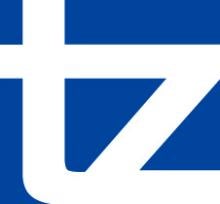The discovery of a 15-ton mass of wipes and hardened cooking oil the size of a bus in the London sewer system—which the British dubbed “Fatberg”—has sparked a flurry of media reports about whether pre-moistened wipes labeled “flushable” can in fact be safely disposed of in one’s toilet. An increasing number of products, such as baby wipes, household cleaning tissues, tampons, and toilet cleaning wands with disposable heads, claim to be “flushable” and “sewer and septic safe.” But municipal sewer authorities across the country have been sounding the alarm that these products can clog household plumbing and city sewer lines. According to the National Association of Clean Water Agencies, over the past few years cities have incurred hundreds of thousands of dollars in new equipment and maintenance costs to repair damage resulting from flushed wipes. Indeed, the Orange County Sanitation District spent $2.4 million on new equipment to unclog its pumps. This has led many sewer authorities to wage a public relations campaign warning consumers not to flush these so called “flushable” products.
So why do manufacturers continue to advertise their products as “flushable” in the face of substantial evidence that these products are not sewer and septic safe? Consumer demand undoubtedly is a major reason. In a September 7, 2013 article addressing this issue, the Washington Post reported that in 2012, wipes marketed as “flushable” accounted for approximately 14% of the $4 billion pre-moistened-wipes market. And this market is expected to continue to grow by 6 percent annually over the next five years.
Another likely contributor is lack of regulation. There are no federal or state laws setting forth standards that must be satisfied before a manufacturer can claim that its products are “flushable” and toilet safe. Sewer authorities have been pushing for such regulation, but with little success so far. In 2008, the Association of the Nonwoven Fabrics Industry (INDA)—a trade group that represents manufacturers of nonwoven fabrics—issued its first edition of the “Guidance Document for Assessing the Flushability of Nonwoven Consumer Products.” The Guidance Document was intended to provide a consistent approach that manufacturers and distributors of nonwoven products could use to determine whether to market a product as “flushable.” It set forth a three-tiered framework of twenty three different tests for determining whether a product qualified as flushable. It also encouraged the industry to adopt the following definition of flushability:
For a product to be flushable it must:
- Clear toilets and properly maintained drainage pipe systems under expected usage conditions;
- Be compatible with existing wastewater conveyance, treatment, reuse and disposal systems; and
- Become unrecognizable in a reasonable period of time and be safe in the natural receiving environments.
A Second Edition of the Guidance Document was released in July 2009. In June of this year INDA published the Third Edition, which makes some significant changes over the previous editions. The original tiered approach with 23 tests has been replaced with what INDA describes as a “more transparent, rigorous straight-line assessment using only 7 core tests, all of which must be passed to support a flushable claim.” The Third Edition also redefines flushability as follows:
For a product to be deemed flushable there must be evidence indicating that it:
- Clears toilets and properly maintained drainage pipe systems when the suppliers’ recommended usage instructions are correctly followed;
- Passes through wastewater conveyance systems and is compatible with wastewater treatment, reuse and disposal systems without causing system blockage, clogging or other operational problems; and
- Is unrecognizable in effluent leaving onsite and municipal wastewater treatment systems and in digested sludge from wastewater treatment plants that are applied to soil.
INDA further created a “Do Not Flush Logo” that manufacturers should prominently display on all products that do not pass the flushability assessment outlined in the Third Edition.
A major problem with INDA’s guidelines, however, is that they are completely voluntary. They have not been adopted by any federal or state agency. And it is not clear whether nonwoven fabric manufacturers actually comply with them. Concerns also remain that some of the tests in the guidelines do not adequately replicate conditions that exist in real-world sewer systems.
Given the proliferation of “flushable” products and the lack of current binding regulation, one potential solution to the labeling problem is to enforce consumer protection laws currently on the books. Most states have consumer protection laws designed to protect consumers from false advertising and mislabeled products. Bringing class actions against manufacturers for violations of these laws could be an effective means of forcing them to change their labeling. In addition, the District of Columbia’s Consumer Protection Procedures Act, D.C. Code §§ 28-3901 et seq., was recently amended to afford “tester standing” to individuals and non-profit organizations that test a product and discover that it has been mislabeled. Under the Act, this “tester” could bring an action on behalf of all D.C. residents and seek an injunction barring a manufacturer from making false or misleading claims about its product. The Federal Trade Commission is also reportedly conducting an investigation into the “flushable” label.
Until something is done to force the nonwoven fabrics industry to adopt standards that permit them to label their products as “flushable” and “sewer and septic safe” only when those products can truly be safely discarded in one’s toilet, consumers and municipalities alike will continue to suffer from clogged pipes. Not only is that costly, it downright stinks.




 />i
/>i

